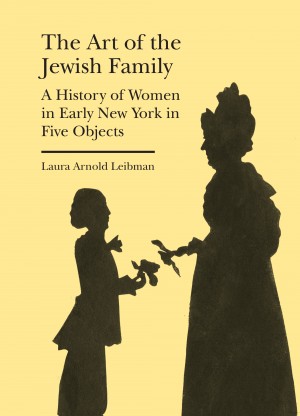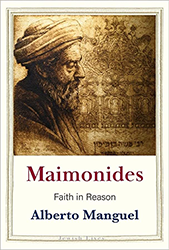When is a silhouette better than a text? As Laura Leibman so expertly demonstrates in The Art of the Jewish Family: A History of Women in Early New York in Five Objects, a silhouette, like the other objects upon which her learned study centers, can serve to fill the gaps left by texts never written and stories never told.
In her volume, produced as part of the Bard Graduate Center’s Cultural Histories of the Material World series, Leibman examines paper fragments, silver cups, miniature portraits made of ivory, “commonplace books,” and artistic renderings of family silhouettes to paint a more complete picture of early American Jewish women who have too often been neglected in the scholarly accounts. Following in the footsteps of the recent National Jewish Book Award-winning America’s Jewish Women: A History from Colonial Times to Today, whose author, Pamela Nadell, blurbs Leibman’s book, the author seeks to overcome “the fissures and silence” of the textual record on Jewish women in America’s earliest decades. In the hands of her adept analysis, a fragment, in which a woman named Hannah pleads for charity, becomes a window into mid-eighteenth century “pauper letters,” women’s education, handwriting, property law, mental illness and synagogue support systems. Silver cups (more transportable than real-estate and more dynamic than paintings and rugs) convey their owner’s social standing (“beyond its desirability as a beautiful, shiny, and malleable metal, silver indicated that people had money to waste”) and served to solidify marriage arrangements. They could also serve as “living memorials” to family members of successive generations who possessed and utilized them for ritual and display purposes.
Marriage, heirlooms, and family histories also play a central role in the book’s most fascinating chapter, “Portraits in Ivory,” which, through an analysis of the composition and genre of ivory miniatures, demonstrates how one’s race could quite literally change color. It chronicles the manner by which Sarah Rodrigues Brandon, born a slave in Barbados, became Sarah Brandon Moses, an heiress married in London’s bevis Marks synagogue whose ivory depiction seems to portray her as white and whose children (she gave birth to nine before dying in New York at age thirty) served in the Civil War, went to medical school, and became the president of New York’s Congregation Shearith Israel (whose records were used extensively in Leibman’s research).
Another of the book’s chapters centers upon the aforementioned commonplace books, which, though no longer common, prefigured today’s social media landscape, containing as our feeds do now, an assortment of learned reflections, opinions, poetry, and drawings offered by the owner as well as friends, neighbors, and acquaintances.
The last section dives into a particular family’s cut silhouette, which washed ashore after the shipwreck of the artist (who survived and gifted his work to his generous hosts). In it, Leibman demonstrates how a family’s religious practices, children’s aspirations, and Orthodox feminism can all be gleaned from the simple-looking rendering of its members.
Though Leibman admits much is still unfortunately unknown about the intricacies of women’s lives in early American history, her volume is a welcome, informative, and fascinating attempt to fill at least some of those gaps.
Dr. Stu Halpern is Senior Advisor to the Provost of Yeshiva University. He has edited or coedited 17 books, including Torah and Western Thought: Intellectual Portraits of Orthodoxy and Modernity and Books of the People: Revisiting Classic Works of Jewish Thought, and has lectured in synagogues, Hillels and adult Jewish educational settings across the U.S.



